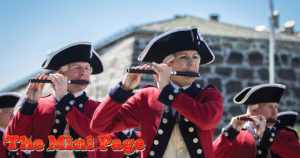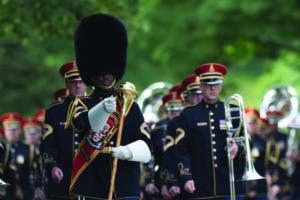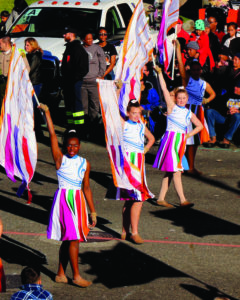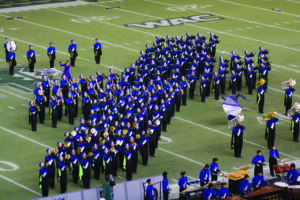
AMP | Kids is proud to partner with The Mini Page, celebrating over 50 years of providing engaging and fun learning opportunities to young readers across the country. This feature was originally syndicated in newspapers the week of July 4 – July 10, 2020. It is distributed digitally here with permission from Andrews McMeel Syndication. Enjoy and share with the young learners in your life!
Marching bands are part of many Fourth of July celebrations. Let’s find out more about these talented musical groups.

U.S. Army soldiers with The Old Guard participate in a wreath-laying ceremony at Arlington National Cemetery.
Marching with the troops
Marching bands began in the military. When armies had to relocate thousands of troops, the rhythm of drums helped speed up the soldiers.
Because there was an exact rhythm, commanders could judge how long it would take to move the army from one place to the next.
In the 1700s, some armies started using a fife, or small flute, along with the drums.
Bands march to school
 Later, military bands began to play more for ceremonial occasions. In the 1800s, colleges began to form bands.
Later, military bands began to play more for ceremonial occasions. In the 1800s, colleges began to form bands.
In the early 1900s, marching bands began performing during halftime at college football games. This was so popular that high schools started their own bands. Today, marching band performances are favorite parts of high school games.
At first, women were not allowed to belong to most bands. People thought it was improper for girls. During World War II, many women took men’s places in bands. In the 1970s, college bands started admitting women.
Besides musicians, bands might include dancers, baton twirlers, and color guards. Color guards don’t play instruments but put on shows with flags or rifle props.
The leading players
 In schools, the band director is usually the teacher. He or she is responsible for the music and for all the musicians.
In schools, the band director is usually the teacher. He or she is responsible for the music and for all the musicians.
He or she may also create some or all of the drill designs. Band directors may use computer programs that map out the drill designs.
The drum majors are the second in command. They conduct the band when it is marching. In school bands, they are students who help carry out the duties of the band director.
The instruments
The main types of marching band instruments are:
- Percussion, such as drums and cymbals, played by being struck
- Brass, such as trumpets and trombones, played when musicians vibrate their lips on the mouthpiece
- Woodwind, such as clarinets and saxophones, played by musicians blowing air into them.
Many instruments were designed especially for marching bands. For example, in the concert band tuba, the bell points up. But in its cousin, the sousaphone, the bell points forward so it fits better over the marcher’s shoulder.
Marching styles vary with each individual band. Many marching bands and drum corps mix styles.
Members of drum corps usually play only brass or percussion instruments. They may have one soloist playing a woodwind instrument. They might dance, leap, and run while playing.
Resources:
On the Web:
The United States Army Guard Fife and Drum Corps
YouTube: NYC Veterans Day Parade
At the Library
Marching Bands by Ruth Daly
Teachers:
For standards-based activities to accompany this feature, visit Andrews McMeel Syndication. And follow The Mini Page on Facebook!
